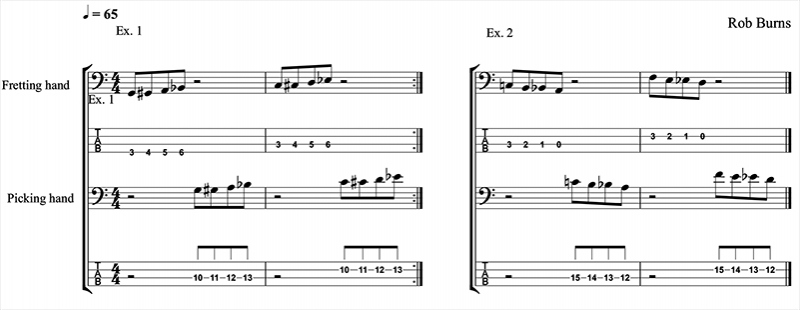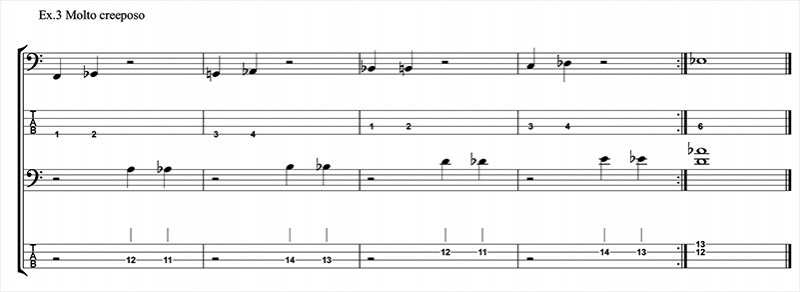Deep Thinking: Cross Hand Exercises
Deep Thinking: Cross Hand Exercises
Hi everyone! Many movies have a prequel delivered after the main feature has been released, but this article is the other (right) way around, a warmer up that will hopefully prepare you for the next Deep Thinking article which is a bit tricky. I used some of the following examples many years ago, but for anyone new to the cross-hand technique they should be useful. A few words of advice first though.
When you are using your fretting hand to tap, be careful not to tap too hard as fretting requires less finger strength. Even if your strings and hands are tough hombres, I don’t want to be in a class action case from bassists with tendonitis! (I know only too well because I did it myself when I learned to do this.) If you are a pick player, just hold the pick between your teeth, under your scratch plate, or anywhere else comfortable as you will need all eight fingers. You could think of yourself as a keyboard player if you like.
Example 1
Simple stuff – bar 1, using your fretting hand, tap low G up to low Bb all on your E string making sure that each note’s volume is the same. The second half of the bar is the same pattern tapped by your picking hand an octave higher, up around the 10th fret going upwards on the A string. You’ll need to spread your hands rather than playing everything in one place for more complex pieces. Bar 2 is the same figure on the next string up.

Example 2
A similar pattern but in reverse. This is slightly harder as you have to pull-off the open A with your fretting hand in bar 1. Otherwise, you are just more or less playing example 1 backwards.

Example 3
A creepy sounding figure because of the semitones (half-steps). It uses the same notes in each hand but each pair of notes, an octave apart, is in reverse and an octave apart on the E and A strings. The final chord is a triple stop chord (three notes), so your picking hand will use fingers 1 and 2 at the higher end of the board while your fretting hand plays a low Eb.

Example 4
This is more of a usable groove pattern – A7 to D7. The fretting hand taps A, C# E (an A major triad) sustain the E followed by the picking hand tapping high A and G, (a double stop) at the top of the neck. The second bar is the same pattern – a D major triad (D, F# and A) with the A sustaining below a high D and C double stop tapped by the picking hand.
Another word of advice. This technique is great for soloing and composition, but remember you are a bassist with a job to do. Don’t do this in an unrehearsed section of a tune while the singer or guitarist are bathing in their own glory!
Dr. Rob Burns is a newly(!) retired Associate Professor in Music at the University of Otago in Dunedin. As a professional studio bassist in the UK, he performed and recorded with David Gilmour, Pete Townsend, Jerry Donahue, Isaac Hayes, Sam and Dave, James Burton, Ian Paice and Jon Lord, Eric Burdon and members of Abba. He played on the soundtracks on many UK television shows, such as Red Dwarf, Mr. Bean, Blackadder, Not the Nine O’Clock News, and Alas Smith and Jones. Rob is a member of Dunedin band, The Verlaines, (new album available in October 2020) and is on three new progressive rock compilation albums released in the UK in 2020 with one more complete progressive album due in 2021.
